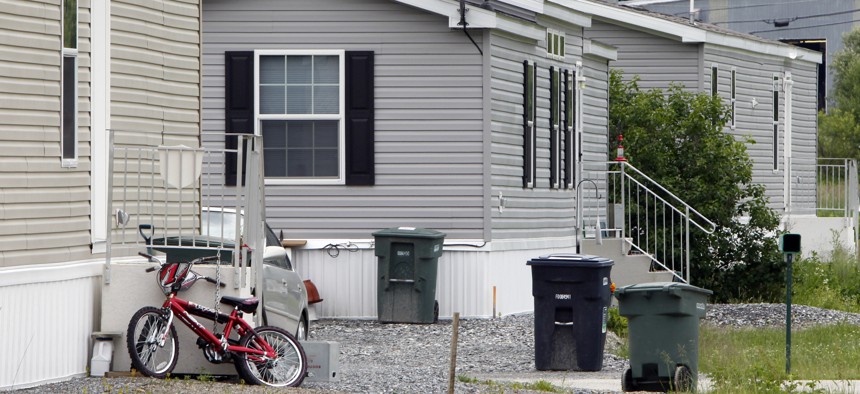What Role Can Manufactured Homes Play in Affordable Housing?

New mobile homes are seen on Tuesday, June 12, 2012 in Berlin, Vt. The state of Vermont is providing additional tax relief to people whose mobile homes were damaged or destroyed during last year's spring flooding or from Tropical Storm Irene. AP Photo/Toby Talbot

Connecting state and local government leaders
Members of the Senate Committee on Banking, Housing and Urban Affairs expressed support for a bill that would encourage state and local governments to consider manufactured homes as part of affordable housing strategies.
Local communities should look to give manufactured homes a role in helping solve the affordable housing crisis, members of a Senate committee said Thursday while assessing legislation that would address housing access and safety.
Approximately 22 million people live in manufactured or mobile homes in the United States, but some communities have banned the placement of such homes or severely restricted where they can be located.
Lawmakers said Thursday during a committee hearing that communities should be more open to manufactured homes, which are built in factories, transported by flatbed truck and installed on site, as part of their affordable housing strategies.
Under consideration is a Senate proposal that would require the U.S. Department of Housing and Urban Development to issue guidelines for including manufactured housing in state and local government’s consolidated plans, which they must submit when applying for federal housing funds. The consolidated plans are used to help state and local governments assess their affordable housing stock and provide a framework used to focus federal funding like the Community Development Block Grant program and the Housing Trust Fund program.
The legislation would ensure “local jurisdictions would have a broader menu of options available as they seek to meet the unique affordable housing needs of their community,” Sen. Mike Crapo, the Republican chairman of the Senate Committee on Banking, Housing and Urban Affairs, said during the committee’s hearing.
Sen. Catherine Cortez Mastro, the New York Democrat who sponsored the legislation, said it would not require jurisdictions to allocate funding toward the construction of manufactured homes. Rather it raises awareness among local communities that manufactured housing can be part of a broader affordable housing strategy.
Sen. Tim Scott, a South Carolina Republican, noted that approximately one-fifth of all homes in his state are prefabricated and said there needs to be a greater focus on building safe and affordable homes.
Mark Yost, president and CEO of Skyline Champion Corporation and a board member of the Manufactured Housing Institute, testified at the hearing in favor of the legislation and cited the cost difference between a manufactured and a traditional home constructed on site.
“The average site-built home today is going for $294,000, excluding land. The average manufactured home is $72,000,” Yost said. “That is a big difference when people are fighting for affordability every day.”
Despite the lower cost of manufactured homes, production has slowed over the last two decades. Urban Institute researchers said the drop can be attributed to three factors: restrictive local zoning laws that limit placement of the homes, difficulties obtaining financing for homes, and the much lower appreciation rate of manufactured homes compared with traditional homes.
Yost said the Senate proposal would “break down barriers to affordable housing by increasing the focus on manufactured housing.”
He said building standards have increased the durability and sustainability of manufactured homes in recent years.
The bill has five bipartisan cosponsors.
Crapo said Thursday he hopes to get the legislation before the full Senate for a vote.
Witnesses at Thursday’s hearing also plugged the importance of the other means to support affordable housing and low-income families.
Peggy Bailey, vice president for housing policy at the Center on Budget and Policy Priorities, said expansion of the low-income tax credit and National Housing Trust Fund could help low-income families maintain access to affordable housing. Expansion of the federal government’s housing choice voucher program could also help offer more stability to low-income families as rents increase.
In addition to the manufactured housing bill, the committee is also considering legislation that would require installation of carbon monoxide detectors in federal public housing, as many states already required of private residences.
Andrea Noble is a staff correspondent for Route Fifty.

NEXT STORY: How Residents' Financial Health Can Affect City Budgets




